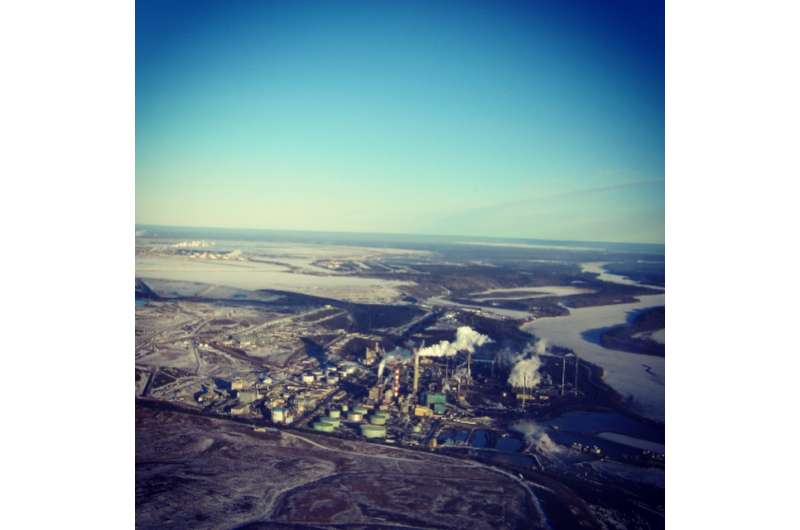New study shows warmer temperatures are affecting lakes in the oilsands region

A recent collaborative research project between scientists from academia and government agencies has identified climate warming as the dominant driver of an increase in algal growth in the Athabasca oilsands region of northern Alberta.
Researchers used dated lake sediment cores to reconstruct past algal production and industrial impact at 23 remote, helicopter-accessed lakes in the oilsands region. Snowpack samples were also used to determine the nutrient deposition across the landscape.
The paper was co-authored by Queen's University researcher John Smol (Biology) and Jamie Summers, a doctoral candidate in the Queen's Paleoecological Environmental Assessment and Research Laboratory.
"One of the biggest challenges we have in environmental work is the lack of reliable long-term monitoring data. Fortunately with lakes, their sediments act like a 'history book', archiving past environmental changes" says Dr. Smol, Canada Research Chair in Environmental Change.
Previous work by members of the research team showed that contaminants from oilsands operations were clearly recorded in the lake sediments, and that algal production was also increasing. However, since only six lakes were used in the initial study, the cause of increased algal populations remained uncertain.
This 2016 study greatly expands the initial work by examining 23 remote lakes with catchments undisturbed by industry, located up to 200 kilometres away from the main oilsands operations.
"Our approach identifies widespread increases in lake primary production that we cannot link solely to the fertilizing effects of the local industry. Rather, we find a stronger link to a warming climate, which is consistent with other studies in the region," says Ms. Summers, the lead author on the study.
"Industrial activities still present a significant threat to freshwaters in the region, but increasing algal production driven directly by aerial nutrient fertilization does not appear to be the dominant stressor. Instead, we found much closer relationships with warmer air temperatures, which can lead to favourable conditions for algal growth, including decreased ice cover and an extended growing season."
The study was published in PLOS One.
More information: Jamie C. Summers et al, Recent Warming, Rather than Industrial Emissions of Bioavailable Nutrients, Is the Dominant Driver of Lake Primary Production Shifts across the Athabasca Oil Sands Region, PLOS ONE (2016). DOI: 10.1371/journal.pone.0153987
Journal information: PLoS ONE
Provided by Queen's University














